Adirondack Habitats
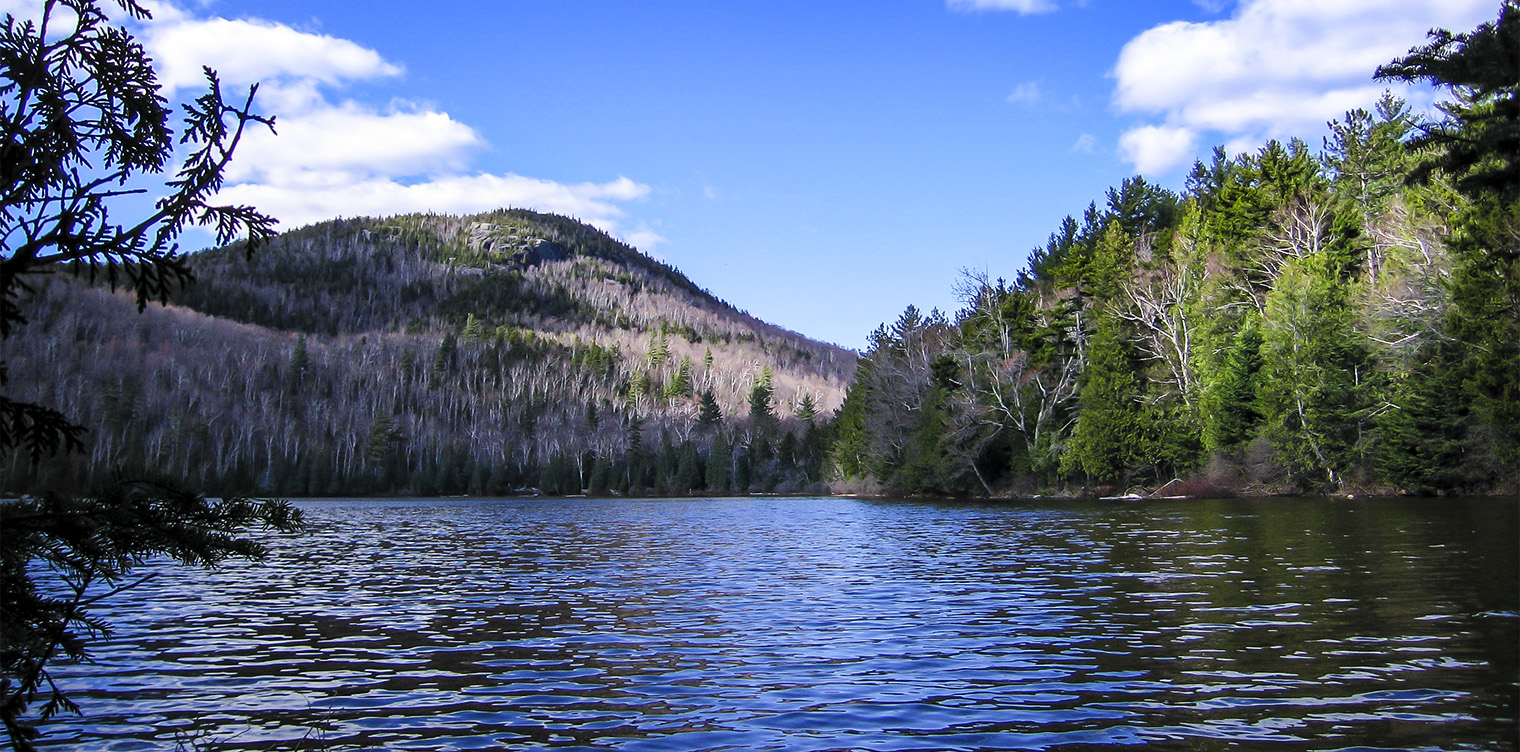
Habitat – the natural environment of an organism – is a major clue to identifying the plants and animals seen along Adirondack trails and understanding their complex interrelationships. Plants and wildlife live together in natural communities where each has the resources necessary for survival. There are several major terrestrial habitats within the Adirondack Park.
- Hikers whose travels take them to mountain peaks will pass through spruce/fir forests on the upper slopes and (for those scaling the higher peaks) the Alpine zone.
- However, the focus here is on those terrestrial habitats that predominate along the nature trails that are the focus of this web site: mixed woods forests, northern hardwood forests, and conifer forests.
Also covered are major wetland habitats – marshes, bogs, fens, and swamps – as well as the impact of natural and man-made disruptions on habitat (forest succession).
Mixed Wood Forests of the Adirondacks
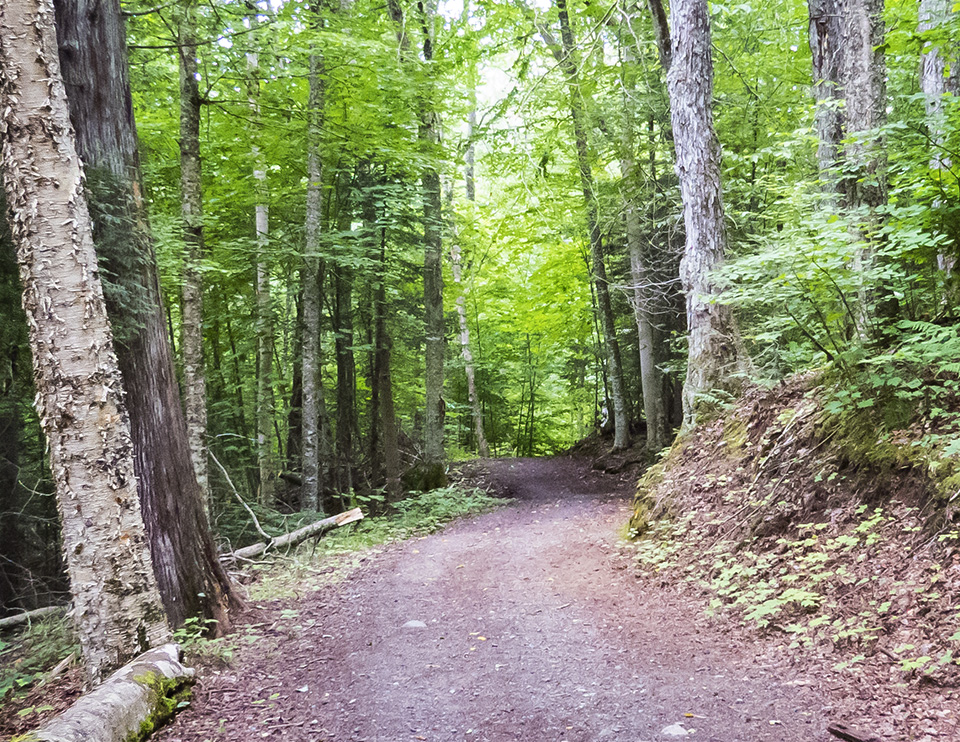
Much of the habitat that walkers will encounter along the Adirondack trails that are the focus of this web site can be classified as mixed woods. As the name implies, the trees here represent a mixture of conifers (with needle-like or scale-like leaves) and hardwoods (deciduous trees that cope with the long harsh winters by dropping their leaves at the end of the growing season).
The mix of conifers and hardwoods varies, depending on soil fertility and the height of the water table. Mixed forests represent a transition zone between the forested wetlands on lower elevations and the northern hardwood forest, which occupies the better drained, gentle slopes at a slightly higher elevation.
Mixed wood forests grow on soil derived from outwash – the sand and gravel deposited by glacial rivers. This soil is rarely fertile enough to support the more demanding northern hardwoods.
On moist sites, Red Spruce grows alongside Eastern Hemlock, Red Maple, Black Cherry, and Yellow Birch. On drier outwash sites, such as eskers, species more tolerant of drought conditions, such as Eastern White Pine and Red Pine, are frequently found. On sites where a high water table keeps moisture near the surface, the dominant trees are Red Spruce and Balsam Fir.
Shrubs associated with the mixed wood forest include Hobblebush and Low Bush Blueberry. Look for a wide variety of ferns along trails running through a mixed wood forest, including Eastern Bracken Fern, Sensitive Fern, and Hay-scented Fern. Wildflowers which thrive in this habitat include Canada Mayflower, Common Wood Sorrel, Purple Trillium, and Indian Cucumber-root. A wide variety of birds are seen and heard in this habitat, including year-round residents like the Black-capped Chickadee and the Blue Jay and summer migrants like the Hermit Thrush and the Ovenbird.
Northern Hardwood Forests of the Adirondacks
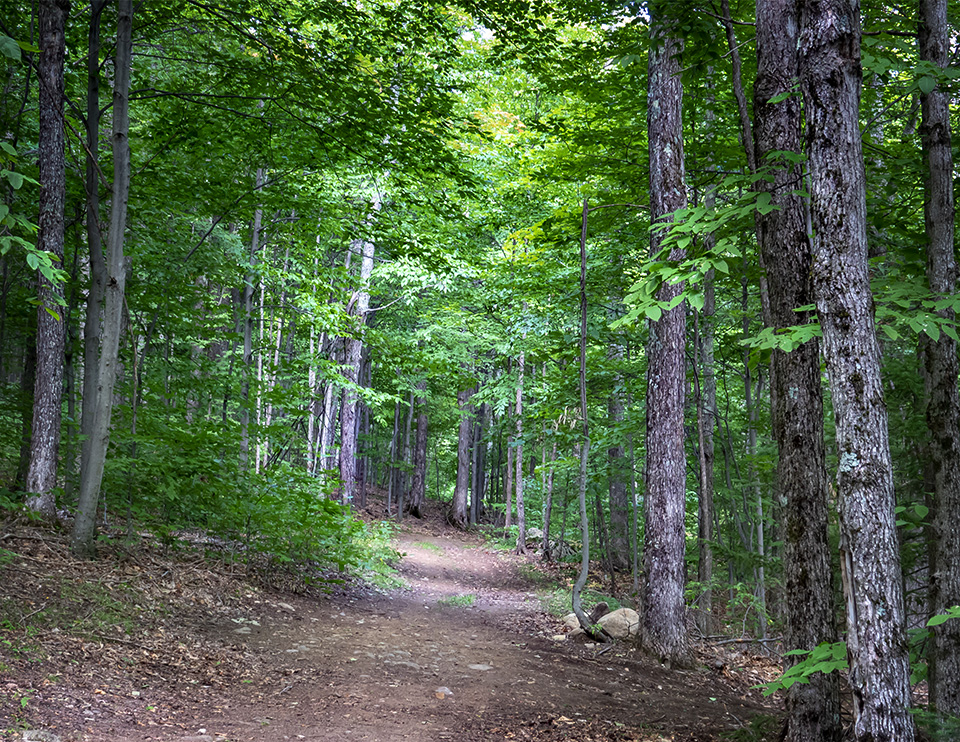
The northern hardwood forest occupies the region's best soils and sites, growing on the more fertile soils that make up glacial till. Species adapted to this community produce a deep shade in which only shade-tolerant seedlings can grow to maturity.
- The two dominant tree species are Sugar Maple and American Beech, both of which can tolerate more shade than other hardwoods and thrive on deep, fertile, well-drained till. Also present in some areas is Yellow Birch, which requires somewhat more sun and does well on both till and outwash, and Eastern Hemlock.
- A community of smaller plants flourishes in the understory, including Striped Maple and Hobblebush, as well as wildflowers such as Foamflower and Dwarf Ginsing. Migratory birds who prefer deciduous forests, such as the Chestnut-sided Warbler, Veery, and Wood Thrush, can also be found in this habitat.
Conifer Forests
The Adirondack Park hosts different types of conifer forests: lowland conifer and mountain conifer. Lowland conifer forests, such as the balsam flats ecological community, are found in imperfectly drained flats, low ridges, and knolls, usually at elevations up to 2000 feet. The dominant tree in this community is Balsam Fir, which grows in pure stands or in mixed stands with Red Spruce or Black Spruce.
Mountain conifer forests are generally found at elevations above 2800-3000 feet on steep mountain slopes.
- The mountain spruce-fir forest is a mountain conifer forest community occurring on cool upper slopes at elevations between 3,000 and 4,000 feet, above spruce-northern hardwood forests and below mountain fir forests. Most sites are somewhat protected from prevailing westerly winds. This forest has a closed canopy dominated by Red Spruce and Balsam Fir.
- Mountain fir forests are conifer forests that occur on thin, acidic soil on cool upper slopes, above mountain spruce-fir forests and below alpine krummholz communities. Mountain fir forests are restricted to high-elevation slopes of the Adirondacks and Catskills, at elevations from 2,500 to 4,500 feet.
Adirondack Wetlands
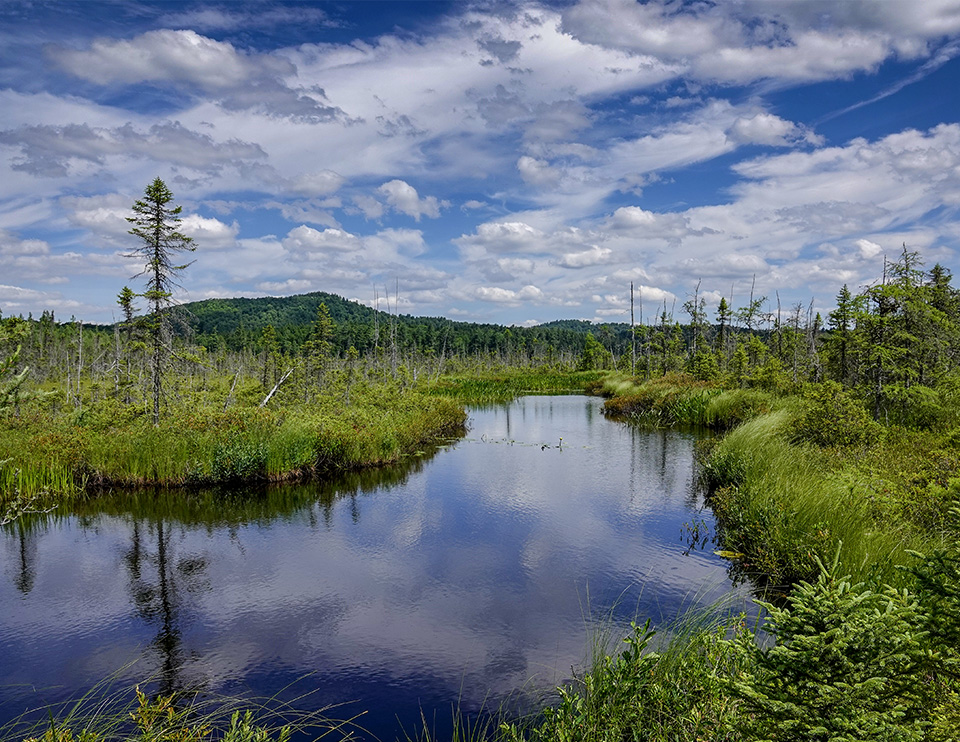
Freshwater wetlands are areas of land that are covered with fresh water. These aquatic habitats represent a transition between two habitats (land and water) and are therefore some of the most biodiverse areas in the world with many land and water species. As a result, Adirondack wetlands, like other wetlands, are of major significance to scores of plant and animal species.
There are several types of freshwater wetlands in the Adirondacks:
Marshes are the wettest of Adirondack wetlands, varying in depth from a few inches to six feet. A marsh is a mineral-rich wetland where the dominant vegetation consists of herbaceous plants that are rooted in hydric soils, but not in peat.
The Adirondack region contains over a quarter million acres of lowland boreal communities, including bogs, fens, swamps, and open river corridors. Bogs, like Bloomingdale Bog and Massawepie Mire, are nutrient-poor acidic wetlands dominated by sphagnum mosses, sedges, and shrubs and evergreen trees rooted in deep peat. Fens are mineral-rich (alkaline) wetlands dominated by sedges and grasses rooted in shallow peat, often with water movement through the peat. Conifer Swamps are wet areas often seen on the margins of marshes and bogs. Open River Corridors contain a mixtures of meadows, thickets, and wetlands.
Ecological Succession in Adirondack Habitats
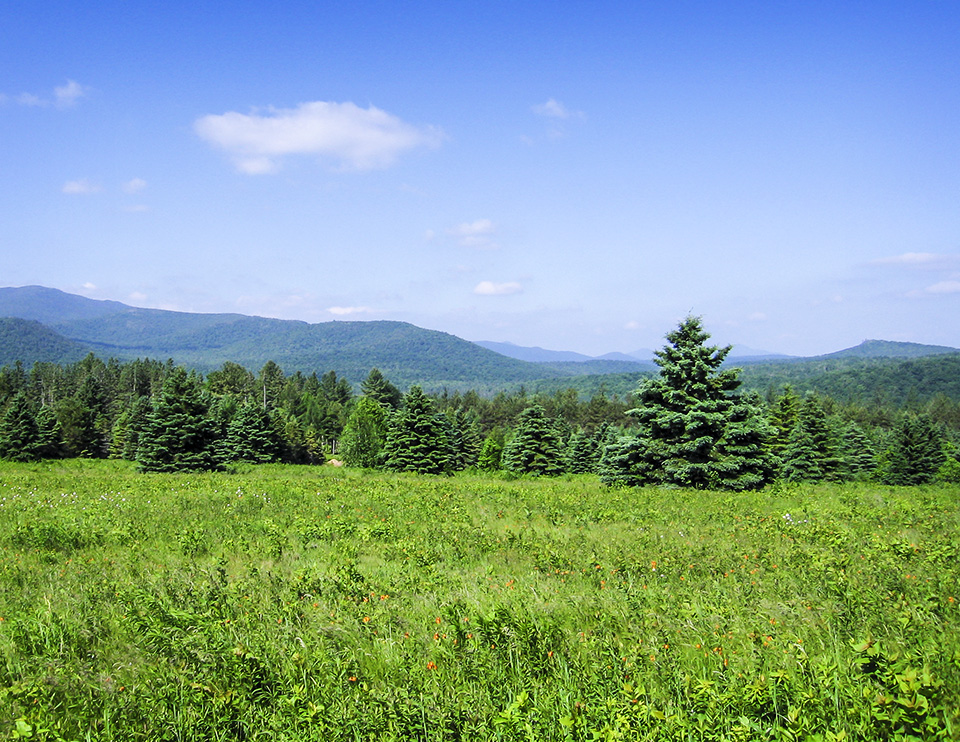
What makes the study and appreciation of the Adirondacks so fascinating is that these habitats, like all habitats, are constantly changing – a process referred to as ecological succession. Succession is the series of changes which take place on a previously colonized, but disturbed or damaged habitat. The disturbance can be natural (such as a major weather event) or manmade (such as logging). Virtually all of the Adirondack forest is in various stages of recovery and adaptation to disturbance. So, in most cases, when you are walking in what may appear to be a primeval forest, untouched by human hands, what you are walking in is a recovering forest.
- Much of the Adirondack forest is second-growth forest: the woodlands which have grown up after logging or fire. Much of the logging, particularly clearcut logging, took place in the late 19th and early 20th centuries. The major fires on Adirondack land also occurred in the early 20th century, a result of the danger posed by the drying slash accumulating from timber harvesting.
- Other woodlands, particularly those bordering Adirondack roads, are in some stage of old field succession – the process through which plants and animals re-colonize cleared farmland that was later abandoned. Observing old fields in various stages of succession provides a living natural history classroom, highlighting the ways plant and animal species adapt to environmental change.
- Major weather events have also shaped selected Adirondack forests, such as the Great Blow-down of 1950 (estimated to have affected 7% of the current Adirondack Park) and the 1998 ice storm.
The process of plant succession in the Adirondacks depends in part on the nature of the disturbance, but usually begins with pioneer communities, followed by a series of plant communities. Eventually a relatively stable mix of long-lived, shade-tolerant, trees develops: a climax community.
References
James M. Ryan. Adirondack Wildlife: A Field Guide (University of New Hampshire Press, 2008), pp. 13-42.
Jerry Jenkins. Climate Change in the Adirondacks: The Path to Sustainability (Cornell University Press, 2010), pp. 33-43.
Jerry Jenkins. The State of the Adirondack Lowland Boreal. Part I. Composition & Geography (Wildlife Conservation Society and Nature Conservancy, 13 September 2004).
Nancy G. Slack and Allison W. Bell. Adirondack Alpine Summits. An Ecological Field Guide (Adirondack Mountain Club, 2006), pp. 15-36.
E. H. Ketchledge. Forests and Trees of the Adirondack High Peaks Region (Adirondack Mountain Club, 1967), pp. 18-43, 96-101, 107-108, 129-131.
John Kricher. A Field Guide to Eastern Forests. North America (Boston: Houghton Mifflin, 1998), pp. 154-219.
Peter J. Marchand. Nature Guide to the Northern Forest. Exploring the Ecology of the Forests of New York, New Hampshire, Vermont, and Maine (Appalachian Mountain Club, 2010), pp. 13-18, 56-93.
Ellen Rathbone, "Pin Cherry: An Overlooked Adirondack Native," Adirondack Almanack, 12 May 2010. Retrieved 13 January 2017.
Paul Hetzler, "In Adirondack Forests, Trees Age Differently," Adirondack Almanack, 7 March 2016. Retrieved 13 January 2017.
Adirondack Park Agency. Natural Communities of the Adirondack Park. Retrieved 13 January 2017.
New York State Department of Environmental Conservation. New York Natural Heritage Program. Ecological Communities of New York State. Second Edition (March 2014). Retrieved 13 January 2017.
Susy Svatek Ziegler, "Postfire Succession in an Adirondack Forest," Geographical Review, Vol. 97, No. 4 (Oct., 2007), pp. 467-483.
Jerry Jenkins. Notes on the Adirondack Blowdown of July 15th, 1995: Scientific Background, Observations, and Policy Issues. Wildlife Conservation Society, 1995.
Walter C. Shortle et al. Tree Survival and Growth Following Ice Storm Injury. USDA Forest Service. Northeastern. Research Station Research Paper NE-723. May 2003. Retrieved 13 January 2017.
Margaret Miller-Weeks and Chris Eagar. The Northeastern Ice Storm 1998: A Forest Damage Assessment. (USDA Forest Service, 1999). Retrieved 13 January 2017.
John Warren, "The Big Blowdown of 1950," Adirondack Almanack, 15 November 2010. Retrieved 13 January 2017.
John Warren, "Anniversary of The Great Adirondack Blowdown of 1995," Adirondack Almanack, 15 July 2009. Retrieved 13 January 2017.
Robinson, G. and J. Zappieri, "Conservation policy in time and space: lessons from divergent approaches to salvage logging on public lands," Conservation Ecology. Volume 3, Issue 1. 1999. Retrieved 13 January 2017.
